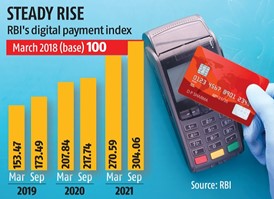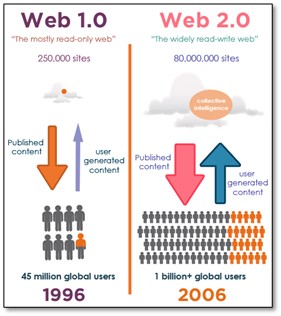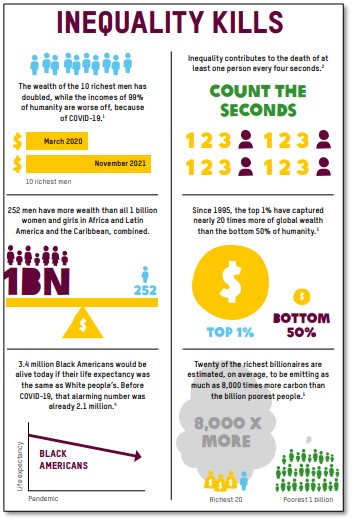Monday, 24th January 2022
Xenotransplantation, plantation
In News
United States surgeons implanted a heart from a genetically modified pig into a 57-year-old recipient in a procedure called xenotransplantation.
What is xenotransplantation?
- Xenotransplantation is any procedure that involves the transplantation, implantation or infusion into a human recipient of either
- live cells, tissues, or organs from a nonhuman animal source, or
- human body fluids, cells, tissues or organs that have had ex vivo contact with live nonhuman animal cells, tissues or organs.

- Gene editing in pigs to reduce immune rejection has made organ transplants from pigs to humans possible, which could offer help to thousands of people who face organ failure, disease, or injury.
- Gene editing in the human host, used in the transplantation, decreased inflammation and blood coagulation, thereby preventing blood vessel damage and also reduces antibody response.
- The natural lifespan of a pig is 30 years, they are easily bred and can have organs of similar size to humans. Hence pigs are a good source for human organs.
Why is xenotransplantion the future?
- Several patients all over the globe die awaiting organ donors. The demand for human organs for clinical transplantation far exceeds the supply.
- The trafficking of human beings for the purpose of organ removal has been a menace in poor countries. It has serious consequences for human security, particularly for the most vulnerable populations, such as the unemployed, homeless people and migrants.
- Recent evidence has suggested that transplantation of cells and tissues may be therapeutic for certain diseases such as neurodegenerative disorders and diabetes, where, again human materials are not usually available.
Possible challenges
- Hyperacute rejection: Within the first few minutes to the first hours of transplantation, human antibodies swarm over the new organ, glomming onto foreign sugars and other cell-surface proteins and triggering inflammation. This summons platelets, a type of blood cell that begins to form clots, hindering blood flow to the organ.
- Anti-Gal response: The fundamental difference between a human and pig immune reponse is while the human system expresses the well-known ABH blood group antigens, the pig’s vascular endothelium expresses a unique protein called Galactose oligosaccharide or Gala1 or simply Gal. Humans are a natural knockout for this protein that quickly triggers anti-Gal antibodies against the transplanted organ.
- Porcine Endogenous Retroviruses (PERV) : Pigs carry a number of viruses known as PERVs which could jump into human cells in culture.
- Inconsistent organ production: To overcome the other challenges of transplantation, gene editing tools are used. But currently the science of adding genes isn’t as advanced as the science of deleting them. Some researchers say overengineering the animals can make it harder to produce consistent organs.
- Raising Suitable pigs: Suitable pigs for harvesting healthy organs need designated pathogen-free pig facility — a hermetically sealed building ventilated and pressurized to keep out bacteria, viruses, and fungi.
Way Forward:
- More precise gene editing tools like CRISPR paired with knowledge gleaned over decades from scientists studying the mechanisms the immune system uses to detect foreign invaders will lead to harvesting safer organs from pigs in the future.
- Genetically engineered pigs with immune-dampening molecules will produce organs that generates lesser immune response to foreign organs in human body.
- Type and extent of immunosuppression needed for the recipient is important because of the possibility of excessive anti-organ-specific antibodies generated in the host.
Sources:
Global Impact of Antimicrobial Resistance
In News
As per the study published in the medical journal Lancet, at least 1.2 million people have died in 2019 due to antibiotic-resistant bacterial infections.
About the News
- It has noted that antimicrobial resistance (AMR) has currently been a leading cause of death worldwide, higher than HIV/AIDS or malaria.
- It has also noted that thousands of recent deaths occurred due to common, previously treatable infections such as lower respiratory and bloodstream infections as the bacteria that cause them have become resistant to drugs.

Other Observations of the Report
- 2-way Disease burden estimation: Disease burden was estimated in two ways:
- Deaths caused directly by AMR: which is deaths that would not have occurred had the infections been drug-susceptible and therefore more treatable- recorded 27 million deaths worldwide.
- Deaths associated with AMR: Which is where a drug-resistant infection was implicated in deaths, but resistance itself may or may not have been the direct cause- recorded 95 million deaths.
- Drug Resistance to various diseases and associated impact on AMR disease burden: Drug resistance in lower respiratory infections such as pneumonia, in bloodstream infections and in intra-abdominal infections have been noted to have the greatest impact on AMR disease burden causing huge fatality.
- Vulnerable section of Population: Although AMR poses a threat to people of all ages, young children were found to be at particularly high risk, with around one in five deaths attributable to AMR occurring in children aged under five years.
- Global Distribution: Deaths caused directly by AMR were highest in Sub-Saharan Africa and South Asia, at 24 deaths per 100,000 population and 22 deaths per 100,000 population, respectively.
- Predicted estimate of Annual deaths due to AMR: Humanity has already reached close to 10 million annual deaths from antimicrobial resistance that was predicted to occur only by 2050.
Source:
ICE360 Survey 2021
In News
People’s Research on India’s Consumer Economy (PRICE) has recently released 2021 edition of its ICE360 Survey which highlights stark K-shaped recovery of Indian economy
About the News
- Income of poorest fifth plunged 53% in 5 years while those at top surged. The survey was conducted between April and October 2021.
- K-shaped recovery occurs when, following a recession, different parts of the economy recover at different rates, times, or magnitudes. This is in contrast to an even, uniform recovery across sectors, industries, or groups of people.
- A K-shaped recovery leads to changes in the structure of the economy or the broader society as economic outcomes and relations are fundamentally changed before and after the recession.
- This type of recovery is called K-shaped because the path of different parts of the economy when charted together may diverge, resembling the two arms of the Roman letter "K.

What are the major findings of the report?
- Financial health of Indian households: The annual income of the poorest 20% of Indian households, which constantly rose since 1995, plunged 53% in the pandemic year 2020-21 from their levels in 2015-16.
- In the same five-year period, the richest 20% saw their annual household income grow 39% reflecting the sharp contrast Covid’s economic impact has had on the bottom of the pyramid and the top.
- Financial Protection against risks: Standstill in economic activity due to pandemic has resulted in a 3% contraction in GDP in 2020-21 which has hit the urban poor most and eroded their income.
- Occupation and livelihood: While job losses were quite evident among Small and Medium Enterprises in the casual labour segment, large companies did not witness much of that. Even among the poorest 20 per cent, those in urban areas got more impacted than their rural counterparts. This has resulted in job losses and loss of income for the casual labour, petty traders household workers.
- Quality of living: There has been a rise in the share of poor in cities with nearly 90 per cent of the poorest 20 per cent lived in rural India, that number had dropped to 70 per cent in 2021. Share of poorest 20 per cent in urban areas has gone up from around 10 per cent to 30 per cent.
- Access to public goods: Access by households in each district based on levels of district development and even income within each development cluster has shown that majority of bread winners in Middle India are either unschooled or have primary schooling. A majority of bread winners in Rich India have completed high school education.
Sources:
National Girl Child Day
On January 24, 2008 the government of India declared January 24 to be celebrated as the National Girl Child Day every year with the objective of raising the consciousness of the society towards the girl child so that she can be valued and respected. It is an initiative undertaken by the ministry of women and child development with an objective to provide support and opportunities to the girls of IndiaSteps taken by the government to fulfill the objectives of National Girl Child Day are Save the Girl Child, Beti Bachao Beti Padhao, Sukanya Samriddhi Yojana, CBSE Udaan Scheme, Free or subsidized education for girl child, Reservation for women in colleges and universities etc.

Sources:
Japan-India Relations at 70: Ever growing Convergence
In News
The year 2022 marks the 70th Anniversary of the establishment of the Diplomatic Relations between Japan and India. The 70th anniversary is based on the theme “building a future for our centenary”.
A brief Background
- Exchange between Japan and India is said to have begun in the 6th century when Buddhism was introduced to Japan.
- In contemporary times, the formal relations between Japan and India began in 1952. Post Second World War, India did not attend the San Francisco Conference but decided to conclude a separate peace treaty with Japan in 1952 after its sovereignty was fully restored marking a defining moment in the bilateral relations and setting the tone for the future.
- India-Japan relations witnessed a significant and qualitative shift in 2000 with the establishment of the ‘Global Partnership’. Since then Japan-India relationship was elevated to the "Global and Strategic Partnership" in 2006 and “Special Strategic and Global Partnership” (SSGP) in 2015.
- In 2015, both countries announced “Japan and India Vision 2025 Special Strategic and Global Partnership Working Together for Peace and Prosperity of the Indo-Pacific Region and the World”, that would serve as a guide post for the “new era in Japan-India relations.”
- The India-Japan Annual Summits are being held regularly. Also, the annual Foreign Minister level Strategic Dialogue, Defense Ministers Meeting, NSA-level Dialogue, Ministerial level 2+2 and other bilateral dialogue mechanisms ensure regular high level and functional engagements.
- The Act East Forum, established in 2017, aims to provide a platform for India-Japan collaboration under the rubric of India’s “Act East Policy” and Japan’s “Free and Open Indo-Pacific Vision”.
Major areas of Cooperation

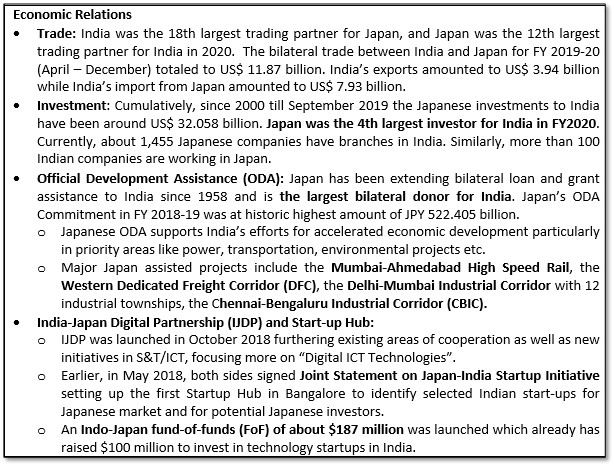

India- Japan Geopolitical Convergence
There are confluence of several regional trends, including the continuing rise of India as a major international player, anxieties about some aspects of Chinese behavior, the state of the rules-based order and the development of Southeast Asia as a more prosperous and significant region in its own right.
- Both India and Japan seek to cooperate to build architecture for peace and security in the Indo-Pacific region. Both India and Japan envisage the Indo-Pacific region free from the domination of a single hegemon. Therefore both the countries are pursuing multilateral arrangements to ensure that no one country can dominate the region.
- India’s national goals to emerge as the manufacturing hub coincide with Japan’s desire to diversify its production bases away from China.
- India’s pursuit of “Act East” policy coincided with Japan’s desire to expand its ASEAN centric economic activity and link with new and emerging centres of growth. Further, India’s Act East Policy (AEP) is being afforded the necessary traction by Japan’s geographical location in East Asia.
- For India, the development of its Northeast Region (NER) remains a priority and India-Japan Act East Forum is encouraging well focused investment in this area..
- There is a strategic convergence in Japan’s Broader Asia Indo-Pacific vision and India’s SAGAR MALA concept unveiled in 2015.
- Both countries also share common vision to support the development of Africa through Asia-Africa Growth Corridor (AAGC).
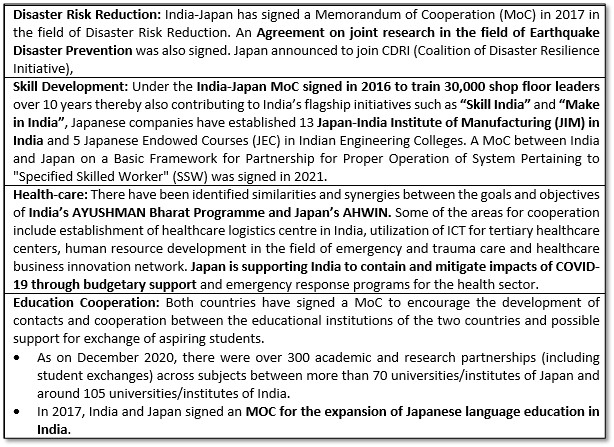
Question: The growing convergence of India and Japan on strategic and economic issues has the potential to shape a multi-polar world that is more peaceful, secure and sustainable. Discuss.
Sources:
- 70th Anniversary of the Establishment of the Diplomatic Relations between Japan and India
- How the India-Japan friendship can help global peace, prosperity
- Explainer / 70 years of India-Japan diplomatic ties
- Why is 2022 of special significance for the congenial relations between India and Japan?
- Build a future with hope for India-Japan relations
- Japan-India Relations (Basic Data)
- India, Japan are natural partners
- Japan-India Relations at 70: From the Peripheries to Center Stage
- Reducing Poverty, Protecting the Planet: Japan, India Partner to Push for Sustainable Development
- Japan Shares Good Reasons to Collaborate in Northeast India’s Development
- Northeast India: Where India’s ‘Act-East’ Meets Japan’s ‘Free and Open Indo-Pacific’
- THE GEOPOLITICAL CONTEXT OF CHANGING JAPAN-INDIA RELATIONS
- India-Japan Strategic Cooperation: Impacting Indo-Pacific
- Japan, India inch closer ‘for rules-based international order’
- Japan-India Partnership in a New Asian Era: Strategic Orientation of Japan-India Global Partnership
- The emerging new global order — III: Japan and India
- India-Japan relations through 2021
- Modi’s India and Japan: nested strategic partnerships
- India launches new trilateral with Italy and Japan for Indo-Pacific stability
- Japan Steps in to Support India Against China in South Asia
- Growing convergence of India and Japan on strategic, economic issues has potential to shape multi-polar world: Harsh Vardhan Shringla
- India and Japan’s Proactive Convergence Continues: The ACSA and Beyond
- India’s Strategic Convergence with Japan in the Changing Indo-Pacific Geopolitical Landscape
- India-Japan in the Indo-Pacific: A Strategic Convergence for Peace, Progress and Prosperity
Netaji Subhas Chandra Bose
This is image of the Hologram of Netaji Subhas Chandra Bose at India Gate inaugurated by the PM of India. Marking Netaji’s 125th birth anniversary, the hologram was installed under the canopy where a statue of King George V had stood till its removal in 1968. A grand statue of the of Netaji would be placed soon. In the first, India will begin Republic Day celebrations from January 23 instead of January 24, to include the birth anniversary of late freedom fighter Netaji Subhas Chandra Bose. Born on January 23, 1897, Netaji played a crucial role in India's freedom movement. Subhas Chandra Bose had also established the Azad Hind Fauj. He also led an Indian national force from abroad against the Western powers during World War II. On Gandhiji's instructions, he started working under Deshbandhu Chittaranjan Das, whom he later acknowledged his political guru. Subhas Chandra Bose was jailed during Civil Disobedience movement in 1930. He was released in 1931 after Gandhi-Irwin pact was signed. He protested against the Gandhi-Irwin pact and opposed the suspension of Civil Disobedience movement specially when Bhagat Singh and his associates were hanged. Subash Chandra Bose was soon arrested again under the infamous Bengal Regulation. After an year he was released on medical grounds and was banished from India to Europe. He was elected President of the Haripura Congress Session in 1938. During his term as Congress President, he talked of planning in concrete terms, and set up a National planning Committee in October that year. Subhas Chandra Bose was reportedly killed in an air crash over Taipeh, Taiwan (Formosa) on August 18, 1945.

Source:
The Moisture content in Crops
- Context: The Indian government intends to modify the moisture content restriction for wheat and paddy.
- The government’s insistence on stricter quality control norms is targeted at ensuring good quality purchase for public distribution and for ensuring its export worthiness
- The weight of water contained in rice or wheat, expressed in percent, is called Moisture Content (MC).
- Produce has moisture, which comes in two forms in grains: composition water and absorbed water or free water. The amount of free water held by the grain product, on the other hand, is a significant aspect in the safe storage of food grains.
- If grain moisture content is too high, even the best aeration equipment and monitoring management will not keep the grain from spoiling. All stored product insect pests, micro-organisms, including molds, require moisture to survive and multiply.
- If the moisture content in a product going in to store is too low, insects and micro-organisms will not be able to grow provided that the moisture in the store is also kept low.

Source:
Image Source:
Operation Sard Hawa and Garm Hawa
- Context: Border Security Force (BSF) has launched 'Operation Sard Hawa'.
- Operation Sard Hawa is an annual exercise launched in the month of January in the Jaisalmer region to increase the surveillance in the Pakistan border.
- It is conducted during winters as chances of infilteration rises due to dense fog cover on the international border and Operation Garam Hawa is conducted during summers where infilteration can be high during heat wave conditions.
- The operations keep a hawk’s eye view on the security conditions along the International border.
- Ceasefire violations have sharply increased over the last five years, recording a 10-fold jump since 2016 when India carried out surgical strikes against terror pads in Pakistan-occupied Kashmir (PoK) in response to the Islamabad-backed suicide attack on an army camp in Uri. This increases the need for such surveillance operations.
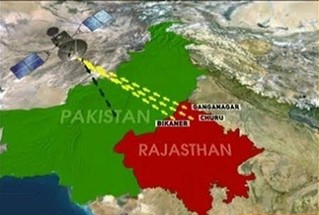
Source:
- Rajasthan: BSF's 'Operation Sard Hawa' along Pak border from Jan 23 to 28
- BSF launches operation ‘Sard Hawa’ at Rajasthan border
- Pak resorted to highest number of border violations just before LoC ceasefire
Image Source:
Embodied Carbon and Operational Carbon
- Context: The Andhra Pradesh government announced its plans to provide energy-efficient power infrastructure to houses built under its affordable housing programme.
- This is a climate-friendly choice since decarbonizing the construction sector is critical for India to meet its climate commitments.
- The building sector is critical because it is responsible for 30% of the electricity consumed in the country and is second only to the industrial sector when it comes to GHG emissions.
- Carbon emissions of buildings are of two kinds: One is operational carbon (produced from the use of energy to run or operate equipment inside buildings or fuel used in transport or for delivering municipal and services), and the second is embodied carbon, which is associated with procurement, manufacturing, construction, and the use and disposal of building materials over the life cycle of a building.
- To reduce operational carbon, it is important to focus on three critical aspects: The building envelope (the structural barrier between the interior and exterior of a building such as roofs, walls, doors, and windows), which are responsible for maintaining cooling and heating within the building, reducing the energy consumption; expanding the usage of energy-efficient appliances and using renewable energy.
- There are four main options to tackle embodied carbon: Reuse construction material to reduce carbon-density in their production; improve the structural design and reduce wastages so that you require less of these materials; employ new construction techniques; replace the existing materials with greener options such as low-carbon cement.
- The Indian government has taken several initiatives to design buildings that reduce the energy consumption of residents. These include the National Building Code 2016; the Energy Conservation Building Codes 2017 for commercial buildings, and the Eco Niwas Samhita 2018 for residential buildings.
- Decarbonising the built environment is profitable financially and environmentally for the climate crisis-hit country and its people.

Source:
- Embodied carbon vs operational carbon: What’s the difference, and why does it matter?
- Policies and People | The net-zero race: Why embodied carbon matters
Image Source:
Kokborok Language
- Context: The Tripura government has formally renamed two more locations with Kokborok names.
- The names of two sites in Kokborok languages include Baramura renamed as Hatai Kotor and Atharomura range renamed as Hachuk Berem.
- The Kokborok is the native language of Borok people who are geographically known as Tripuris and of those inhabiting the neighbouring areas of Bangladesh. It is one of the state languages of Tripura notified in 1979.
- The name “Kokborok” comes from kok meaning "verbal" and borok meaning "people" or "human".
- A majority of Tripura's 19 indigenous communities speak Kokborok as their primary language.
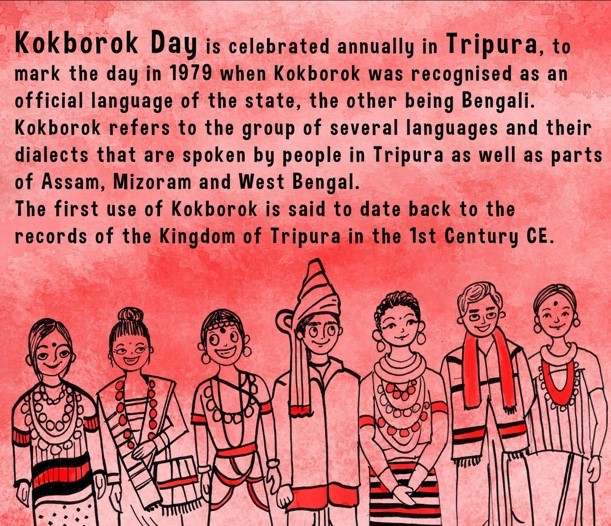
Source:
Image Source:
The Strategic Logic Behind India’s Sale of BrahMos Missiles to the Philippines: ORF
Essence: The editorial emphasizes on the India’s first major international defense deal and talks about the strategic context of arms export. India happens to be one of the largest arms importers but this $400m deal with Philippines could help India gain the strategic entry into defense export market. Other countries like Malaysia, Vietnam, Indonesia in SE Asia are also keen on defense transactions with India. Due to this, India has set a defense export target of $5 billion by the year 2025.
Such defense deals not only help India in building its make for the world economy but also cater to “anti access/area denial” (A2AD) by these nations in their adjoining regions by China. This will also keep Chinese defense movements diverted towards its own backyard and withhold it from entering the Indian subcontinent space.
Why you should read this article?
- To understand the significance of defense exports by India.
- To know the strategic importance of exporting defense to SE Asian countries.
Source:
Brewing a better future for plantations: HBL
Essence: A draft bill has been proposed to replace the Tea Act 1953 with the Tea (Promotion and Development) Act, 2022. Proposed draft has provisions in line with long standing industry demand to improve ease of doing business, but some concerns remain.
Changing the power of the Tea board and giving licensing power to the state government may have some far-reaching impacts on the tea industry and its impact on sustainable growth. The author says that even though it will be too early to give a final verdict on the proposals, long due legislation should be passed without much delay.
Why should you read this article?
- To understand reasons for government’s efforts to replace Tea Act 1953.
- To know about the provisions of the newly proposed bill and some of the concerns related to it.
- To understand different stakeholders related to the tea industry which will help you write a multidimensional answer to a related question.
Source:
A Four Point Action Plan for India’s Forest Management: ORF
Essence: The recently released India State of Forest Report has some alarming findings. The growth of India’s forest cover has slowed to an eight-year low in 2021. By the year 2030, 45-64% of India’s forests are projected to be impacted by climate change and rising temperatures. O meet the commitments if forest restoration and sequestration made by India at UNCCD , the article suggests four actions.
India needs to urgently redefine ‘forests’ from current definition to a more thoughtful definition keeping in mind complex natural ecosystems with multiple tree species. Secondly the diversion of forestland for non-forest purposes should be discouraged. Third, the compensatory afforestation for lost forests should not be growing of large-scale monoculture, single variety tree plantations of non-indigenous, commercial species. Lastly, the article suggests to generate support of local communities for forest conservation, who have the capacity to undertake adaptive management and maintain close oversight.
Why you should read this article?
- This article talks about the declining forest cover in India, its causes as implications.
- This article provides 4 step approach which can be adopted by India to combat this situation.
Source:
The Plastic Man in Senegal
Background
- Senegal, despite its tiny size, is one of the top countries contaminating the world's oceans with plastic. It fails to manage trash and has a big population living along the coast.
- One man, Modou Fall, has taken to the streets and single-handedly leads a campaign for environmental awareness - fully dressed in his plastic rubbish costume.
Campaigning for Plastic out from West Africa
- Like an educator, a defender and a protector of the environment, costumes like a “Kankurang” (traditional figure in Senegalese culture), works to educate fellow Senegalese residents about the dangers of plastic.
- During his military duty in 1998, Mr. Fall first observed the negative impacts of plastic.
- In 2006, Mr. Fall founded his association, Senegal Propre or Clean Senegal, with a savings of just over $ 500.
- He planted dozens of trees in the city and held a community meeting to convince people to stop buying disposable plastics.
- He organized a cleaning and tire recycling campaign in the lively area of Dakar, and his trash pickers avoided taxi drivers and street sellers.
- Using the plastic waste they collected, Clean Senegal made bricks, paving stones and public benches. The old tires became sofas and sold for about $ 430 each. This money was spent on more environmental initiatives, such as planting trees at school.

Quote: “It cannot be right to manufacture billions of objects that are used for a matter of minutes, and then are with us for centuries.” - Roz Savage
Source:
Share the article
Get Latest Updates on Offers, Event dates, and free Mentorship sessions.

Get in touch with our Expert Academic Counsellors 👋
FAQs
UPSC Daily Current Affairs focuses on learning current events on a daily basis. An aspirant needs to study regular and updated information about current events, news, and relevant topics that are important for UPSC aspirants. It covers national and international affairs, government policies, socio-economic issues, science and technology advancements, and more.
UPSC Daily Current Affairs provides aspirants with a concise and comprehensive overview of the latest happenings and developments across various fields. It helps aspirants stay updated with current affairs and provides them with valuable insights and analysis, which are essential for answering questions in the UPSC examinations. It enhances their knowledge, analytical skills, and ability to connect current affairs with the UPSC syllabus.
UPSC Daily Current Affairs covers a wide range of topics, including politics, economics, science and technology, environment, social issues, governance, international relations, and more. It offers news summaries, in-depth analyses, editorials, opinion pieces, and relevant study materials. It also provides practice questions and quizzes to help aspirants test their understanding of current affairs.
Edukemy's UPSC Daily Current Affairs can be accessed through:
- UPSC Daily Current Affairs can be accessed through Current Affairs tab at the top of the Main Page of Edukemy.
- Edukemy Mobile app: The Daily Current Affairs can also be access through Edukemy Mobile App.
- Social media: Follow Edukemy’s official social media accounts or pages that provide UPSC Daily Current Affairs updates, including Facebook, Twitter, or Telegram channels.

